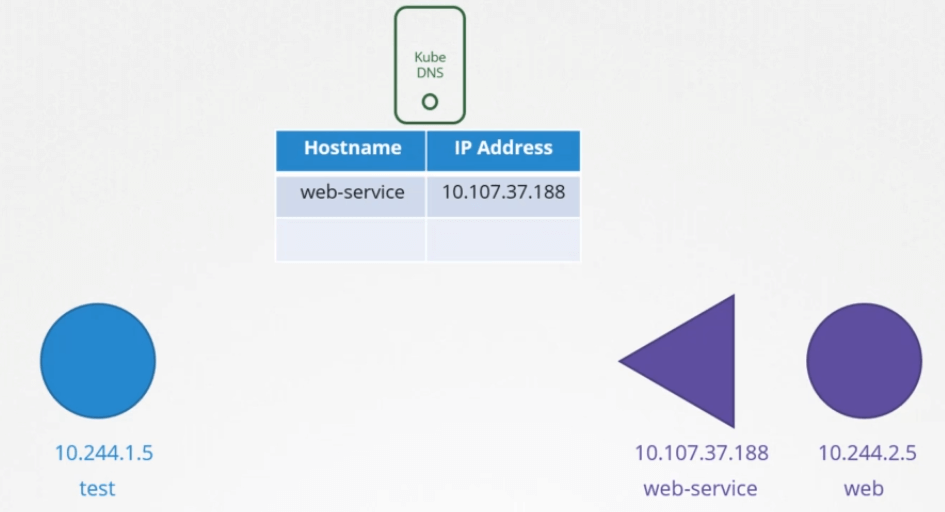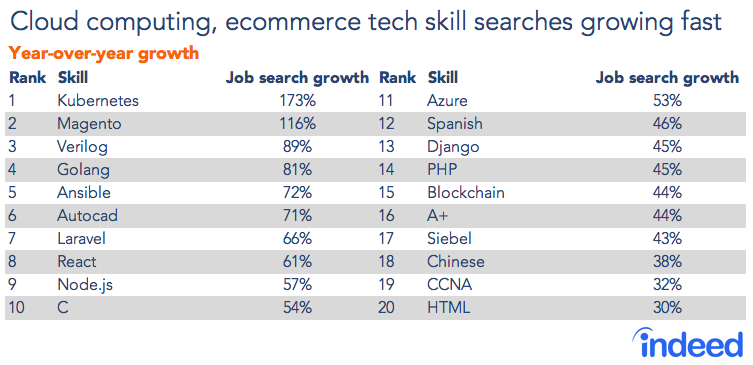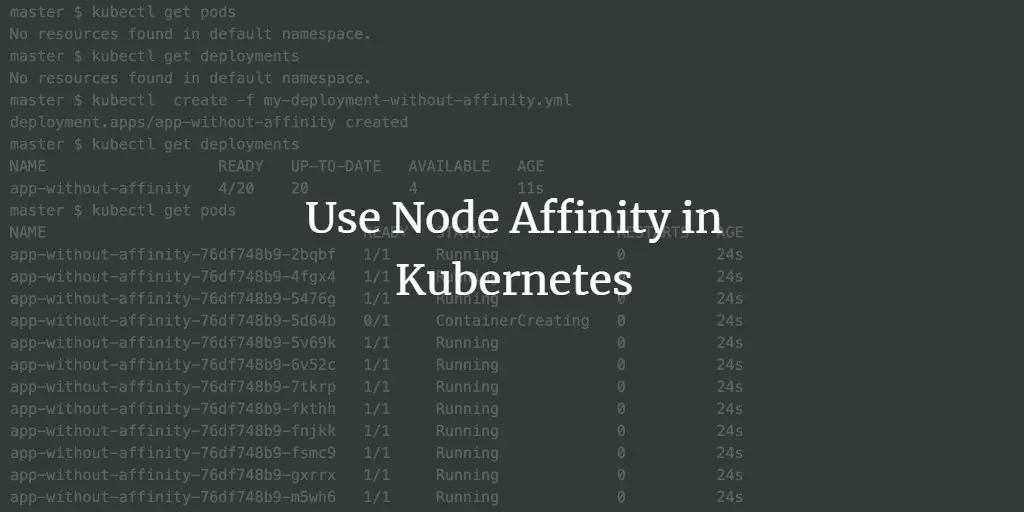40 labels and selectors in kubernetes
› kubernetes › kubernetesKubernetes - Labels & Selectors - Tutorials Point Labels selector are core grouping primitive in Kubernetes. They are used by the users to select a set of objects. Kubernetes API currently supports two type of selectors − Equality-based selectors Set-based selectors Equality-based Selectors They allow filtering by key and value. Matching objects should satisfy all the specified labels. 6. Labels, annotations, selectors — Kubernetes Tasks 0.1 documentation Create service (only routable inside cluster). The service is assigned Cluster IP (DNS record is automatically created) which load-balance across all of the pods that are identified by the selector. $ kubectl expose deployment app1-prod.
Labels and Selectors | Kubernetes The label selector is the core grouping primitive in Kubernetes. The API currently supports two types of selectors: equality-based and set-based . A label selector can be made of multiple requirements which are comma-separated. In the case of multiple requirements, all must be satisfied so the comma separator acts as a logical AND ( &&) operator.
Labels and selectors in kubernetes
Kubernetes, Labels and Selectors - Automated Ramblings Labels are a key/value formatted peice of metadata attached to an object within Kubernetes. Labels provide additional information about the object with relevance to the consumer or object. For example, a label can specify hardware characteristics of a node or if a workload is for testing of production. Labels implicitly group like objects ... The Purpose of Labels and Selectors in Kubernetes 15 Jan 2021 • 1 min read. In short, labels are a way to group and reference an object. For instance, you could group all APIs with a label like type: api. Selectors are just a way to reference objects by labels. If we set a selector to type: api, then it would be referencing all objects with that label. This turns out to be a wildly useful ... Labels and Selectors - Kubernetes - GitLab The label selector is the core grouping primitive in Kubernetes. The API currently supports two types of selectors: equality-based and set-based . A label selector can be made of multiple requirements which are comma-separated. In the case of multiple requirements, all must be satisfied so the comma separator acts as a logical AND ( &&) operator.
Labels and selectors in kubernetes. Using Kubernetes Annotations, Labels, and Selectors Annotations, labels, and selectors are used to manage metadata attached to your Kubernetes objects. Annotations and labels define the data while selectors provide a way to query it. Here are the differences between the three concepts, what they're designed for, and how you can use them to manage your resources. Annotations The Guide to Kubernetes Labels - Kubecost Blog 2. Know the Label Selection Methods. Kubernetes provides two ways of selecting objects with labels: equality and set-based selectors. Equality: You can select objects which are equal or not equal to one or more label values. You can have multiple selectors separated by commas, and all conditions must be met for a resource to match this selector. Labels and Selectors — Kubernetes on AWS 0.1 documentation Labels and Selectors ¶ Labels are key/value pairs that are attached to Kubernetes objects, such as pods (this is usually done indirectly via deployments). Labels are intended to be used to specify identifying attributes of objects that are meaningful and relevant to users. Labels can be used to organize and to select subsets of objects. Kubernetes Label Selector And Field Selector | by Ashutosh Kumar ... Labels are key value pairs that can be used to identify, or group the resources in Kubernetes. In other words, labels can be used to select resources from a list. You can label Kubernetes native...
Understanding Labels, Selectors and Annotations in Kubernetes There are two kinds of selectors. Equality-based and Set-based selectors. Equality-based requirement Equality based selectors help you filter resources equal to a certain key and value. You would following operators for equality based-requirements: = == != Example # this command would give us all resources with the env =prod label en.wikipedia.org › wiki › KubernetesKubernetes - Wikipedia Just like labels, field selectors also let one select Kubernetes resources. Unlike labels, the selection is based on the attribute values inherent to the resource being selected, rather than user-defined categorization. metadata.name and metadata.namespace are field selectors that will be present on all Kubernetes objects. Other selectors that ... Certified Kubernetes Application Developer (CKAD) - KodeKloud "Kubernetes, the open source cloud computing tool, had the fastest growth in job searches, rising 173% from a year before. " - Hiringlab.org A Kubernetes Certification (CKAD) can take your career to a whole new level. Learn, practice, and get certified on Kubernetes with hands-on labs right in your browser. Kubernetes Core Concepts - Labels, Selectors and Annotations What are Selectors in Kubernetes? Selectors are used to filter out objects based on their assigned Labels. Labels and Selectors goes hand in hand. For example Selectors will help us filter out objects like give all the application pods which are of type staging. Example syntax to define Selectors
Labels - Unofficial Kubernetes The kubernetes.io/ prefix is reserved for Kubernetes core components. Valid label values must be 63 characters or less and must be empty or begin and end with an alphanumeric character ... Labels selectors for both objects are defined in json or yaml files using maps, and only equality-based requirement selectors are supported: "selector ... Kubernetes: Usage and Understanding of Kubernetes Labels, MatchLabels ... Labels are key/value pairs that are attached to objects, such as pods. Labels are intended to be used to specify identifying attributes of objects that are meaningful and relevant to users. Labels can be attached to objects at creation time and subsequently added and modified at any time Each object can have a set of key/value labels defined. › kubernetes-selectorHow does Selector Works in Kubernetes? - EDUCBA Kubernetes selector allows us to select Kubernetes resources based on the value of labels and resource fields assigned to a group of pods or nodes. It is useful when we have to get details or perform any action on a group of Kubernetes resources or when we have to deploy a pod or group of pods on a specific group of nodes. Labels And Annotations In Kubernetes - K21 Academy Label selectors are used for filter Kubernetes objects based on a set of labels. Selectors use a simple Boolean language. There are two kinds of selectors: Equality based and Set based. Equality based. Equality-based selectors allow filtering by label keys and values. Three kinds of operators are used: =, ==, != Example: If we wanted to list ...
Using Kubernetes Annotations, Labels, and Selectors Annotations, labels, and selectors are used to manage metadata attached to your Kubernetes objects. Annotations and labels define the data while selectors provide a way to query it. Here are the differences between the three concepts, what they're designed for, and how you can use them to manage your resources. Annotations
Working with labels and selectors | Kubernetes Cookbook - Second Edition Working with labels and selectors Labels are a set of key/value pairs, which are attached to object metadata. We could use labels to select, organize, and group objects, such as Pods, ReplicaSets, and Services.
kubernetes.io › docs › referenceWell-Known Labels, Annotations and Taints | Kubernetes May 17, 2022 · Well-Known Labels, Annotations and Taints. Kubernetes reserves all labels and annotations in the kubernetes.io namespace. This document serves both as a reference to the values and as a coordination point for assigning values.
certified-kubernetes-administrator-course/04-Labels-and-Selectors.md at ... Labels and Selectors. Take me to Video Tutorial; In this section, we will take a look at Labels and Selectors. Labels and Selectors are standard methods to group things together. Labels are properties attached to each item. Selectors help you to filter these items. How are labels and selectors are used in kubernetes?
How to Provision Node Labels and Selectors in Kubernetes? (K8s) (K8s) Labels selectors are core grouping primitive in Kubernetes. They are used by the users to select a set of objects. Kubernetes API currently supports two types of selectors − Equality-based...
› kubernetes-labels-selectorsKubernetes labels, selectors & annotations with examples We have used labels in some of the examples in previous articles, but here I will explain the usage of labels and other related terminologies. Labels. Labels give us another level of categorization, which becomes very helpful in terms of everyday operations and management. Labels are attached to Kubernetes objects and are simple key: value pairs.
Kubernetes Labels, Selectors, and Annotations | Getting Started This will open your CLI editor of choice and allow you to add and remove labels and other details. When you save and exit, the changes will apply. Selectors As their name suggests, label selectors allow you to identify the objects you have tagged with particular labels. Label selectors can either be equality-based or set-based.
Labels and Selectors - Kubernetes The label selector is the core grouping primitive in Kubernetes. The API currently supports two types of selectors: equality-based and set-based . A label selector can be made of multiple requirements which are comma-separated. In the case of multiple requirements, all must be satisfied so the comma separator acts as a logical AND ( &&) operator.






Post a Comment for "40 labels and selectors in kubernetes"